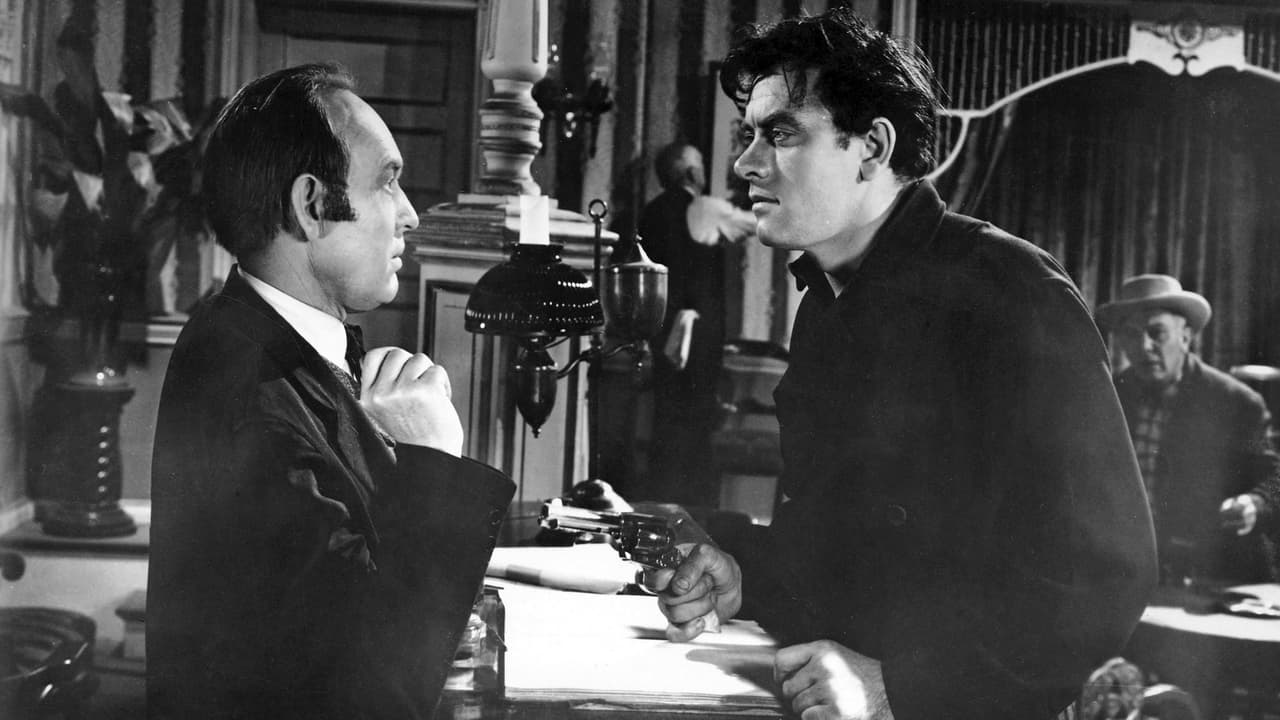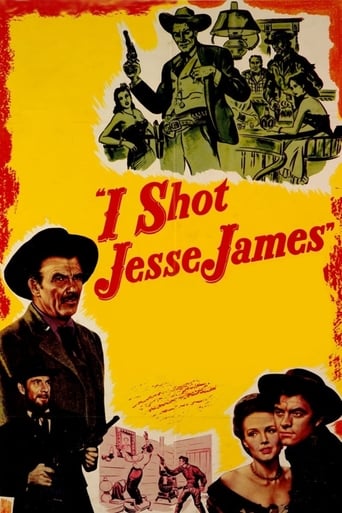Konterr
Brilliant and touching
Claire Dunne
One of the worst ways to make a cult movie is to set out to make a cult movie.
Kodie Bird
True to its essence, the characters remain on the same line and manage to entertain the viewer, each highlighting their own distinctive qualities or touches.
Philippa
All of these films share one commonality, that being a kind of emotional center that humanizes a cast of monsters.
JohnHowardReid
Producer: Carl K. Hittleman. Executive Producer: Robert L. Lippert.Copyright 11 February 1949 by Lippert Productions. U.S. release through Screen Guild: 26 February 1949. New York opening at the Palace: 1 April 1949. U.K. release through Exclusive: floating from November 1949. No Australian release. 81 minutes (cut to 72 in the U.K.).COMMENT: Sam Fuller's debut as a director certainly starts off in a promising fashion. The credit titles are superimposed on posters in a complete 360-degree tracking shot. An opening sequence deftly conveys tension by a creative use of close-ups. But after these initial teases, the movie loses its impetus, reverting in the main to the disappointingly routine. True, there is an occasionally effective composition, but the climax is abjectly weak; and a fist fight, whilst vigorously staged, is filmed entirely in long shot to allow for stand-ins - very patently contriving to always keep their backs to the camera - to slug it out! The cast is not much help. Distinctly second-rate. The "B" budget also shows up in such money-saving devices as the over-use of the Silver King Saloon set and the comparative paucity of background extras. Not to mention the excessive dialogue. In a word - unimpressive.
OldAle1
Few DVD releases this year so far have been more exciting to me than this issue of Criterion's Eclipse series, consisting of Sam Fuller's first 3 films. Fuller is, no question, one of the great American originals, completely inimitable (and perhaps indescribable, at times). This, his first feature, opens on a stark tableau: bank robbers and bank employees, tensely standing each other off, the robbers hesitating to shoot while the tellers try to waste their time. A signal is tripped, a siren blares, a shootout occurs, a bandit is wounded and a teller killed -- all in less than a minute. Jesse James and his henchman Bob Ford escape, James saving Ford's life and in typical Fuller fashion, foreshadowing his own doom as he tells Ford that now he's "responsible" for him.This has little to do with what is known of the real James and Ford brothers; it seems pretty hard to believe that rural/western born Jesse was the cultured gentleman he acts in the early part of this film, and the later scenes of Ford and John (later Marshall John) Kelley bear scant resemblance to the historical record; no matter though if you're more interested in the taut, exciting storyline that Fuller has crafted. Jesse lasts just a few minutes on screen, and then it's Ford's turn to play on our sympathies as his cowardly actions haunt him for the rest of the film, and he tries to no avail to redeem himself in the eyes of his sweetheart, Cynthy, who we know instinctively will wait for him -- only so far.Many of Fuller's trademarks are already in place: hard-bitten dialogue (though not so outlandish and over-the-top here as it would be in some later films), fairly heavy use of wide-eyed close-ups, and an in-your-face, blunt yellow journalistic style that on first glance may seem to admit little subtlety. Poke around a little though and you'll find a lot of complexity in the character of Bob Ford, especially, and a fairly ambiguous attitude about both vigilantism and honor. The acting is surprisingly solid here given Fuller's penchant for picking hammy players, though only Preston Foster as Kelly seemed entirely at home.
zetes
Six days after seeing Andrew Dominik's The Assassination of Jesse James by the Coward Robert Ford, it's still the film at the forefront of my mind. I saw this as a followup to that. Like most Hollywood films of the era (and most of today), I Shot Jesse James plays fast and loose with the facts. In this film, Ford (John Ireland) shoots James for the reward money so he can marry his sweetheart (Barbara Britton). Unfortunately, that cowardly act turns her off of him, and she gravitates toward a man named John Kelley (Preston Foster). Kelley is a fictionalized version of Ed O'Kelley, the man who ultimately shot Robert Ford for nothing more than fame. It's pretty hilarious that he's more or less made into the hero of this picture. Jesse James is ludicrously depicted as an avuncular Abe Lincoln figure. Besides all of this hoo-ha, Sam Fuller, whose debut this was, does a decent job characterizing Ford. Too bad Ireland, an actor I immediately recognized but couldn't say for the life of me where I know him from (I looked it up – he also played the reporter, and pretty much the lead character, in the Best Picture of that year, All the King's Men), is a pretty boring actor. I usually associate Fuller with fast pacing and good plotting, but this one plods along lamely with its romantic triangle melodrama. It does have a couple of good scenes, though, like one where a goofy looking teen (Gene Collins) tries to assassinate Ford, and another where Ford encounters a folk singer performing the Jesse James ballad, a scene which is echoed in Dominik's film.
alexandre michel liberman (tmwest)
This was the first film directed by Samuel Fuller. The producer was Robert Lippert, who gave total freedom to Fuller as long as the budget was low. The result was a financial success considering the amount that was invested and it established the pattern that Fuller's films would follow: low budget, but control of the film by Fuller.If ever a film deserved to be called "noir" it is this one. Apart from being filmed in black and white, but more black than white, it is the story of a man so blinded by love that all through the film you feel his anguish and desperation. Fuller took the liberty of adding this love story to the tragic life of Robert Ford, who is known up to our days as "the dirty little coward that shot Mr. Howard.". John Ireland is a convincing Ford, Preston Foster is John Kelley a man that is in love with the same woman.. Barbara Britton is outstanding as Cinthy Waters, the woman. She is beautiful and has an incredibly modern look for a film that was made in 1949, makes you think of Nicole Kidman. She is unreachable to Ford, he knew that as a fugitive their love could not survive, but he did not realize that as a cowardly killer, even though he was pardoned, the people would hate him and the odds would be that she would not accept him. She was unwillingly the cause of his tragedy.

